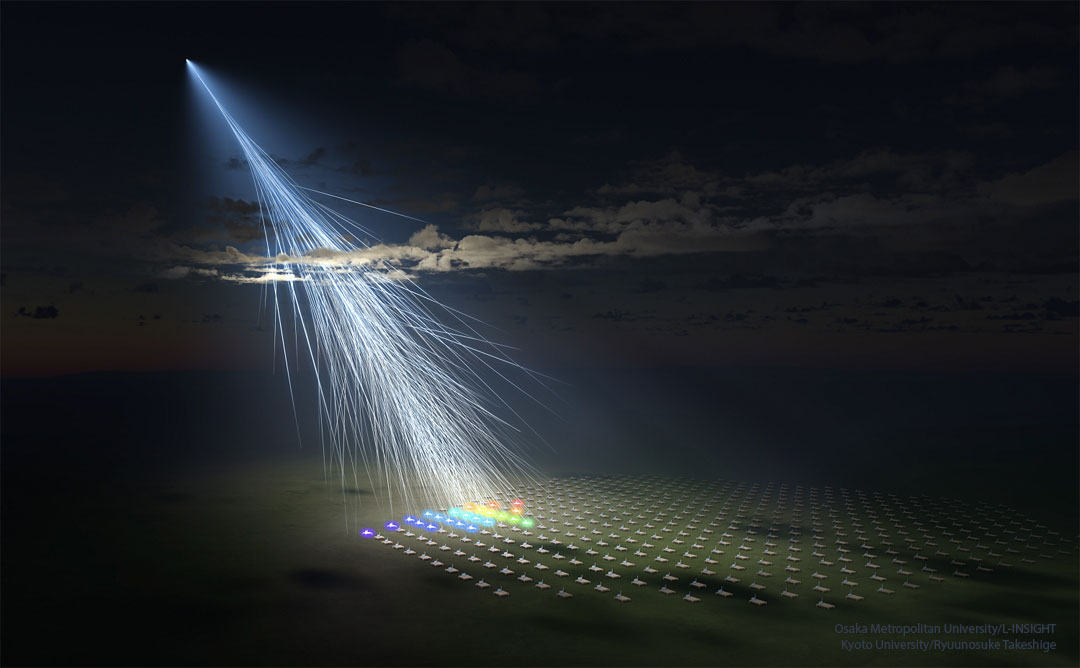2023年12月5日
Energetic Particle Strikes the Earth
Illustration Credit: Osaka Metropolitan U./L-INSIGHT, Kyoto U./Ryuunosuke Takeshige
Explanation: It was one of the most energetic particles ever known to strike the Earth — but where did it come from? Dubbed Amaterasu after the Shinto sun goddess, this particle, as do all cosmic rays that strike the Earth’s atmosphere, caused an air shower of electrons, protons, and other elementary particles to spray down onto the Earth below. In the featured illustration, a cosmic ray air shower is pictured striking the Telescope Array in Utah, USA, which recorded the Amaterasu event in 2021 May. Cosmic ray air showers are common enough that you likely have been in a particle spray yourself, although you likely wouldn’t have noticed. The origin of this energetic particle, likely the nucleus of an atom, remains a mystery in two ways. First, it is not known how any single particle or atomic nucleus can practically acquire so much energy, and second, attempts to trace the particle back to where it originated did not indicate any likely potential source.
Open Science: Browse 3,200+ codes in the Astrophysics Source Code Library
Tomorrow’s picture: torched by stars
高能粒子撞击地球
图示提供: Osaka Metropolitan U./L-INSIGHT, Kyoto U./Ryuunosuke Takeshige
说明: 这是迄今所知撞击地球的最高能量粒子之一,然而它从何而来的?以天照(神道教的太阳女神)为名的这颗粒子,就如其他撞击地球大气的宇宙射线一样, 造成电子、质子和其他基本粒子的空气射丛喷洒到地球上。在这幅主题图示里,宇宙射线空气射丛撞击了位于美国犹他州的望远镜阵列,而此阵列则于2021年5月记录到”天照事件“。宇宙射线空气射丛很常见,你很可能也曾被这种事件的粒子喷过,尽管你很可能不会查觉。这例高能粒子很可能是原子核,它的来源在二方面仍然是个谜。首先,我们不知道粒子或原子核如何能获得如此巨大的能量。其次,科学家试图回溯这颗粒子的来源,但并未找到任何可能的源头。 (Amaterasu 天照; air shower 空气射丛)
开放科学: 浏览天体物理学源代码库中的3,200多个代码
明日的图片: torched by stars







